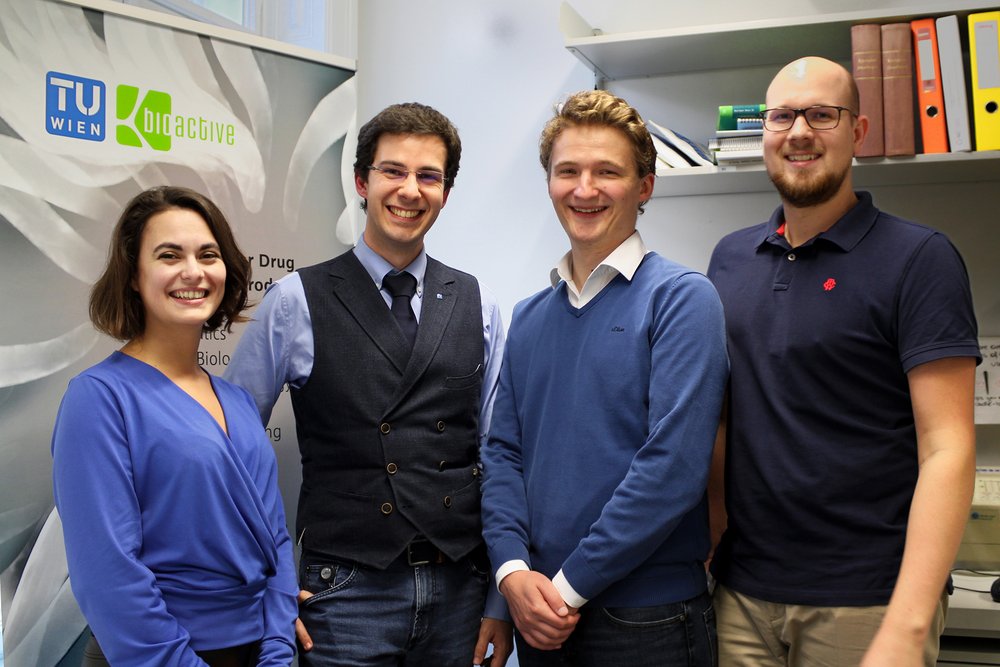Alongside us humans, several million fungal species populate earth. Most of these organisms are capable of producing so-called secondary metabolites. Secondary metabolites are substances that are not primarily necessary to survive but are beneficial under certain conditions, for instance for protection and competition. Some secondary metabolites, such as penicillin, can also be used as pharmaceuticals by humankind. For these reasons, researchers are searching for new secondary metabolites. One promising approach to this is to search and activate the responsible genes within the genomes of fungi.
To this end, a team led by Christian Derntl, TU Wien, developed a bioinformatics method to distinguish between essential genes and so-called gap genes. The method is based on comparing the evolutionary background of fungal genes. The research team published the method, called "FunOrder", in the journal PLOS Computational Biology.
Remedies through stress
Fungi normally do not produce secondary metabolites in the laboratory because these compounds are not needed for vital processes such as cell growth. In their natural habitat, fungi produce many different substances in order to deal with stresses and compete with other fungi or bacteria. It is possible to induce the production of secondary metabolites in the laboratory by switching on the relevant genes. Naturally, this requires knowledge of these genes. "Fungi harbor a great potential for new secondary metabolites. However, the fact that these are not readily produced under laboratory conditions makes the search for them more difficult," says Christian Derntl, describing the search for new bioactive compounds.
Targeted gene activation
Genes responsible for secondary metabolites often cluster together in the genome. This means that they are located in close proximity on the DNA, forming so-called biosynthetic gene clusters. These gene clusters contain at least one core gene that determines the basic chemical structure of the secondary metabolite and can be easily recognized due to its size and composition. Next, further enzymes modify this basic chemical structure to obtain the final secondary metabolite. Notably, biosynthetic gene clusters often also contain so-called gap genes. These genes are located in the gene clusters but are not necessary for the synthesis of the secondary metabolites. In order to find new secondary metabolites, Christian Derntl's team is pursuing a bottom-up approach. "We aim to find new substances by activating these biosynthetic genes clusters," Derntl explains. Of course, only the essential genes should be activated for this purpose, but not the gap genes. The FunOrder method was developed precisely for this purpose. "We want to predict which genes are essential for the secondary metabolite production and thereby decide which ones should to be taken into account in the lab," summarizes the first author of the study, Gabriel Vignolle. Already existing methods are highly effective in these clusters, but have problems with predicting which genes are essential and which are not.
FunOrder brings more than fun
A central question that the scientists around Christian Derntl asked themselves was how genetic data can be interpreted in a meaningful way. "We live in an age in which genomes can be sequenced very easily and inexpensively," explains Derntl. "Countless data sets are also available on the Internet. Currently, it is more challenging to evaluate and structure the data in a meaningful way. Bioinformatics can help us with that." So the team developed the computer program FunOrder, which receives various genes as input. Using a specially designed database, FunOrder can identify genes with similar evolutionary backgrounds. "We were subsequently able to show that precisely these co-evolved genes are functionally necessary and can thus be distinguished from gap genes," explains Gabriel Vignolle.
The method is not only suitable for analyzing and structuring existing data, but can also be used to study the genomes of newly discovered fungi. The source code for the program is publicly available, allowing scientists worldwide to perform such analyses.
The project originated from the PhD program "TU Wien bioactive - Technologies for Drug Discovery and Production", in which Mr. Vignolle is active.
Original publication
Contact
Dr. Christian Derntl
Synthetic Biology and Molecular Biotechnology Research Group
TU Wien
+43 1 58801 166565
christian.derntl@tuwien.ac.at
